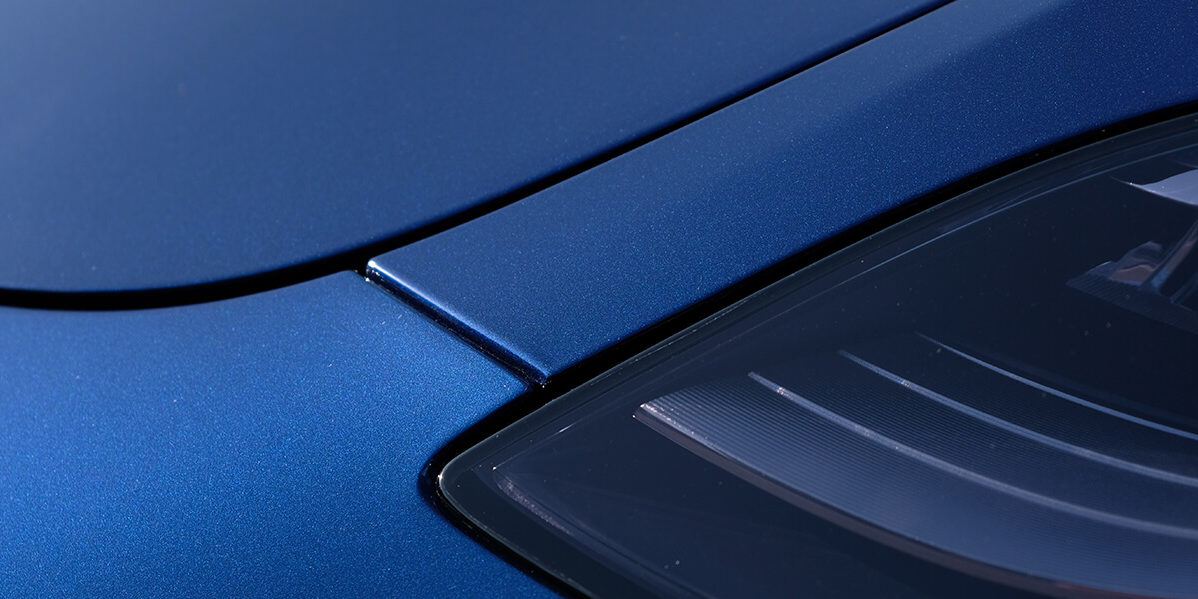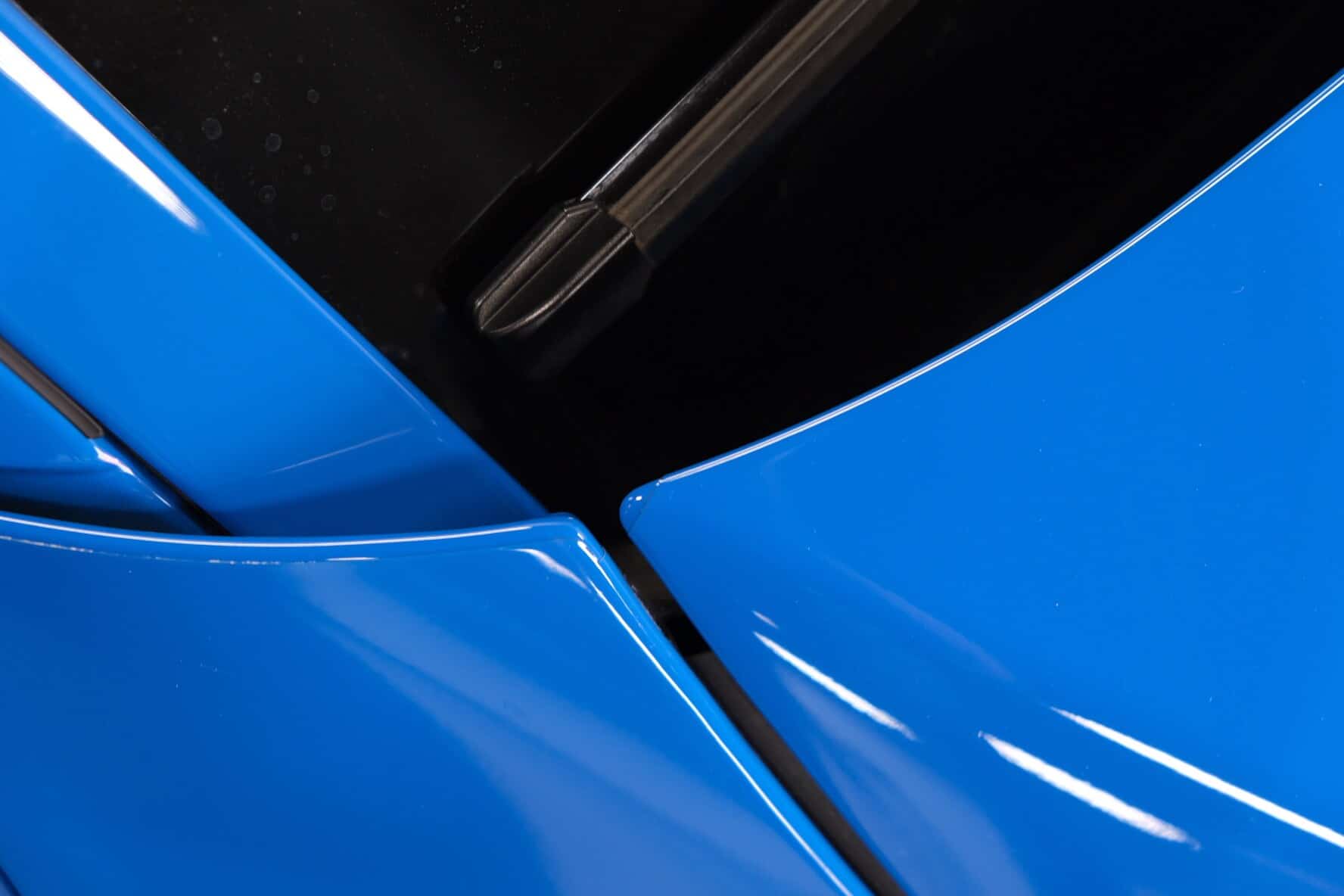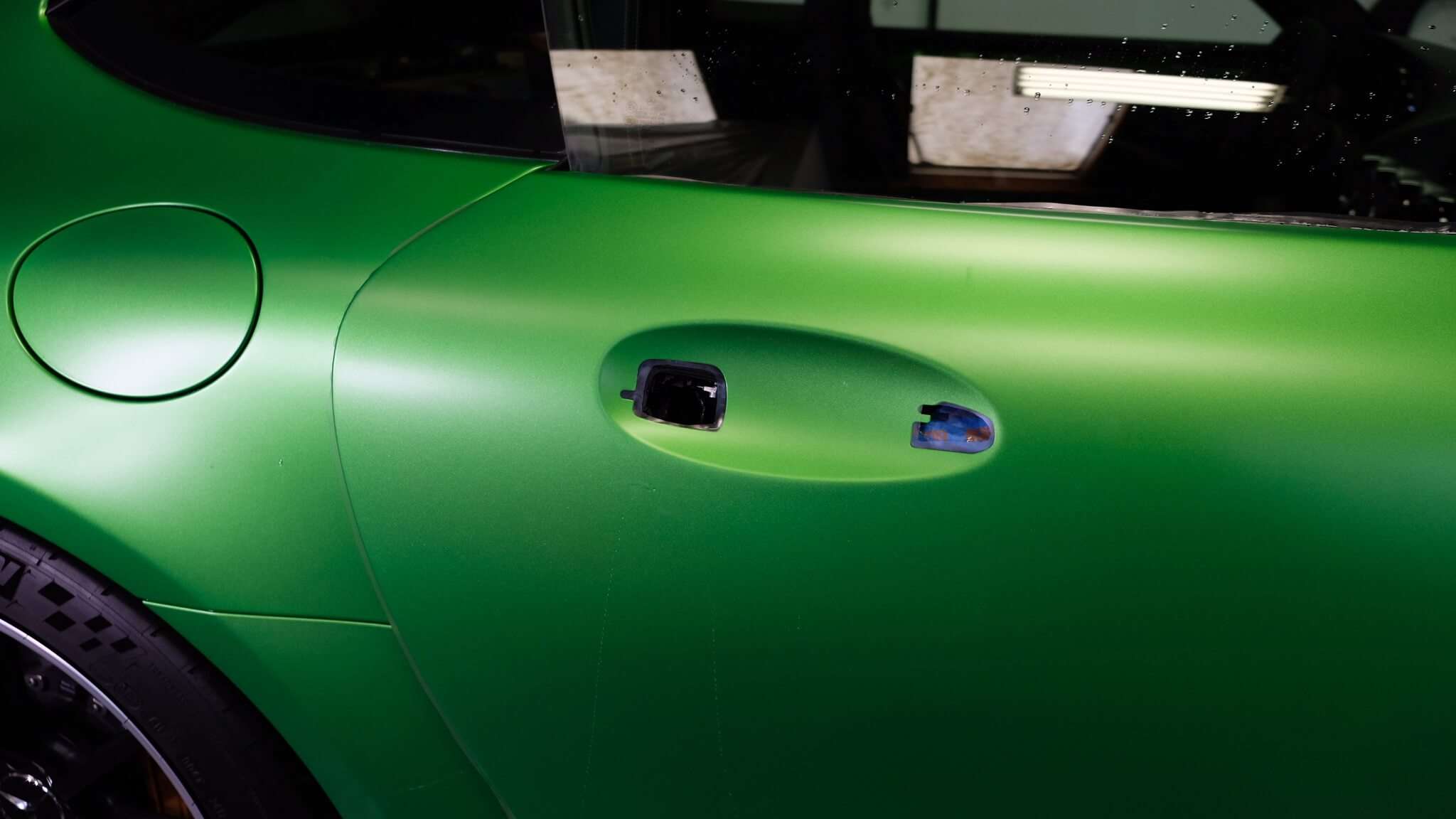Before we get into the details, let’s address one thing: not all PPF installs are the same. There are a lot of different techniques that can produce lower quality jobs to get the job done fast to high quality precision jobs where the finished result is so flawless it goes undetected from the naked eye. In this article, we will cover two main methods: standard installs which use kits/patterns and custom installs that utilize bulk film (large sheets) for a more precise finish.
As a customer, you should take several things into consideration when making the decision to have paint protection film (PPF) applied to your vehicle. First, you may want to do some initial research on the different types of film on the market and find a shop in your area that carries this brand. Different brands will have different levels of quality, appearance, and cost. Some films look more clear and translucent, some appear thicker, and others have a more glossy appearance. Other things to consider when purchasing film might be ‘how good is the warranty for this particular brand of PPF?’. Some of the major paint protection film companies include: Xpel, 3M, STEK, Prestige, and Suntek.
Once you have identified the type of film you would like, the next step is to determine the quality of the install you would like. For the most part, PPF installation styles can be categorized as Standard Pattern and Custom. Below we will break down the two styles and touch upon our preferred method of PPF installation.
Standard Pattern Install
The Standard Pattern install is a great entry style of film installation. For this style, we use a film plotter and STEK’s DAP (Design Access Program) software designed for cutting panel patterns on the film. Standard kits include wrapped edges wherever possible but will inevitably have some exposed edges in most scenarios. Overall, the Standard Pattern install is great for those that are looking for vehicle coverage, can live with a few exposed edges on the vehicle, and/or might have some budgetary limitations.
Standard pattern installs can be a great option, however, using a pattern can lead to cutting corners (no pun intended) such as the image shown below. In this image, you can clearly see this BMW M5 done by another shop has visible film along the edges (normal with a standard install). You can also see that the left panel was not aligned properly leaving a larger gap and the corner on the panel on right was not trimmed properly (likely due to a rushed install). In a custom bulk job, which we will describe below, the film would not be visible and thus eliminate these problems.
Custom PPF Install
Customizing the PPF installation process means having to ‘bulk’ the film, meaning the installer cuts a custom film piece that extends beyond the length and width of the car panel. This allows for a completely seamless film install, in most cases hiding the appearance of the film entirely. The custom install differs from the standard in a few ways. First, this custom PPF install requires more time and effort to achieve the desired results. Next, this style requires more material to be involved in the installation, which is part of the reason the cost is higher for these custom jobs. The other reason these jobs tend to cost more is that they involve more dismantling of the removable items off the vehicle prior to install (such as emblems, vents, bumpers, grill pieces) in order to hide the edges of the film underneath them. Removing certain parts allows for a smoother and cleaner install in order to get the film to lay down properly. Furthermore, some DAP patterns used for the standard method inevitably require seams in the panel of the car. A custom bulk install can in most cases eliminate all of these joining seams that you would find from a pattern. Lastly, because bulk paint protection film is not shaped to the dimensions of the car panel, the PPF installer must spend the extra time stretching the film to fit the panel and must carefully hand trim the edges.
The custom PPF install is the preferred method for Elite Auto Spa as this is the cleanest method for installing paint protection film. The custom method is perfect for those looking for a seamless look with no edges as well as wrapped and capped corners.







